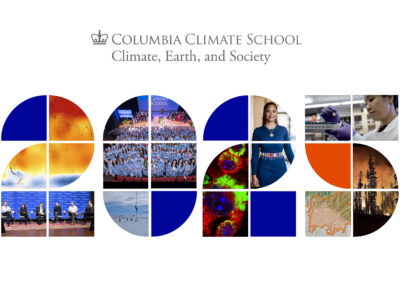
Smoke from forest fires has been choking cities across Southeast Asia for months. The hazy, yellow blanket poses serious public health and economic risks for the communities it envelops. Indonesian authorities have been working hard to put out the fires, but have had trouble preventing the fires, which are intentionally set to clear land for agriculture. The government has resorted to using warships to evacuate its citizens from fire-affected areas. However, few of the other inhabitants of Indonesia’s forests, like the endangered orangutans, have made it to safety.
The fires are more than a local menace—they pose a global threat as well. They are huge—visible from space—and have begun to garner worldwide attention. Burning peat releases immense stores of carbon dioxide to the atmosphere, strongly contributing to global warming. Since September, daily CO2 emissions from the fires alone routinely surpass the average daily emissions from the entire U.S. economy.
Why is so much carbon released from these fires?
The forests now burning had been growing on, and were contributing to, vast stores of peat—the partially decayed plant material that accumulates where growth is faster than decay. Peatlands (places where peat accumulates) are an important part of the Earth’s climate system—they are the primary locations where carbon from the atmosphere is sequestered on land. While they cover only 3% of the land surface, they hold 30% of soil organic carbon.
Since the end of the last ice age, approximately 600-700 gigatonnes of carbon—that’s 600-700 billion tonnes—have been sequestered from the atmosphere as peat, roughly equivalent to the total amount of carbon that was in the atmosphere before industrial times. As tropical peat forests are drained and burned, carbon that took thousands of years to accumulate is rapidly released back into the atmosphere.

Guido van der Werf, a forest scientist at the University of Amsterdam, estimated the total emissions from the fires this year to be 1.62 billion tonnes of CO2, or about 0.44 gigatonnes of carbon (GtC) so far this season.
Let’s put this number into some context.
Of the 600-700 GtC that have been sequestered in peatlands globally since the last ice age, about 100 GtC are in the tropics; the rest are in boreal and Arctic regions. That means that the emissions from the fires this season alone are nearly half a percent of the total carbon accumulated in all tropical peatlands since the last ice age ended a little more than 11,000 years ago, or 0.15% of all the carbon emitted by human activity since the industrial age began.
Indonesian peatlands accumulate carbon at a rate of about 55 grams of carbon per meter squared per year—higher than most tropical peatlands elsewhere. If we generously extrapolate this rate to the about 400,000 km2 of tropical peatlands worldwide, the rate of accumulation of all tropical peatlands globally is only about 0.02 GtC annually. At 0.44 GtC, the Indonesian peat fires this season have emitted what took the entire Earth’s tropical peatlands at least 22 years to accumulate.
Forest fires are set each year, often illegally, for agriculture. The most common purpose is to produce palm oil, an economically important commodity, which is an ingredient in thousands of foods and cosmetics. Indonesia produced about 31 million tonnes of palm oil last year, and is projected to produce 31.5 million tonnes this year. The U.S. Energy Information Administration reports that burning a gallon of gasoline releases 2.5 kilograms of carbon to the atmosphere. This year, a gallon of palm oil from Indonesia will have released almost 10 times that, 24 kilograms of carbon, from burning peat forest.
Palm oil can be produced sustainably, but there is great economic pressure on small farmers to produce palm oil as quickly and cheaply as possible. Enforcement of laws that prohibit burning of peat forest is left to local authorities who are more easily influenced by their constituents and the palm oil companies that support them than by the Indonesian national government. Consumer pressure may be the only way to reduce these unsustainable agricultural practices.
What makes this year so bad?
El Niño conditions in the Pacific Ocean have made Indonesia and the rest of Southeast Asia particularly dry, lowering the water tables in the peat forests, making much more of the peat available to burn. Normally, peat does not burn below the water table, where it is water saturated. Further, many places where land is cleared by burning are also drained, artificially lowering water tables even further.
During the last major El Niño, 1997-98, about 0.95 GtC were released from Indonesian peat forest fires, and though this year only about 0.44 GtC have burned away, the season is not yet over.

Jonathan Nichols is a Lamont Assistant Research Professor at Columbia’s Lamont-Doherty Earth Observatory and a lover of peatlands. Follow him on Twitter @BogFossil.



